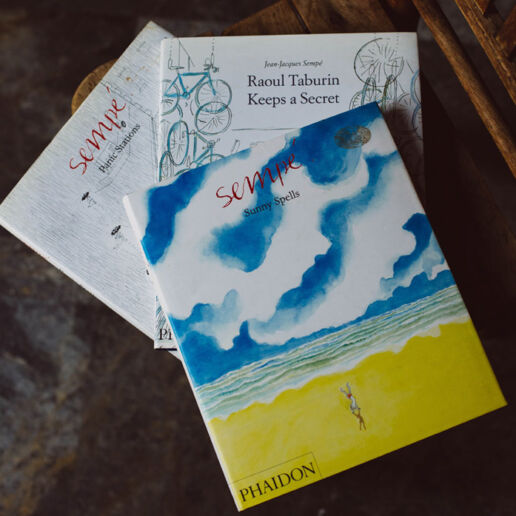JEAN-JACQUES SEMPE COLLECTIONS
If you are somehow involved in writing or drawing; or specially interested in comics narration, the illustrations of the French drawer and cartoonist Jean have definitely caught your attention. He is a childhood friend they haven’t met yet for some; while already a great inspiration for others who do not even know his name…
Tens of children’s books including the Le Petit Nicolas series, daily cartoons that have been translated into many different languages including Turkish, The New Yorker covers that are about 180 in number or the magazine-newspaper illustrations… His life story and how Nicholas came into being (which we know as Pıtırcık in Turkish) tell a lot about his “lines”. At the age of 14, he quit school when he couldn’t pass his tests.
He joined the army to get a bed and food when all of his job applications were rejected, even though it was the WW2 period. However, it changed the course of his life to settle in Paris and work with René Goscinny (the creator of Asterix) after coming back from war. He considers the character Nicholas as the expression of his desire to re-live his childhood/youth so
that he could forget about the traumatic experiences in the army. By this way, he saved not only his own childhood but also that of millions, giving them a chance to experience life in a more amusing and less lonely way at those ages.
It is bountifully rewarding to have a contact with Sempé, there is no limit as to what he can teach you. Before anything else, he teaches you that humor is not about an extravagant or careless act of laughing; but rather a subtle smile that ceaselessly sits at the edge of your mouth. His humor is conscious of limits, it never gets out of its own line or fluctuates due to
transitory fashions. Yet he achieves his consistency by adapting to the changing rhythms of time and people.
He takes photos of the community and individuals and presents them by drawing in a “language” that we can understand, without necessarily trying to “make us think” while making us laugh. His lines are soft. He shows the reality without making life pinker than it is or beating around the bush. He doesn’t -generally- give in to French grandiose, he draws for everybody. He produces solutions. And talks with small letters.
Most importantly, he reminds us of the value those who speak laconically rather than talking loudly without ever stopping. Each time.


